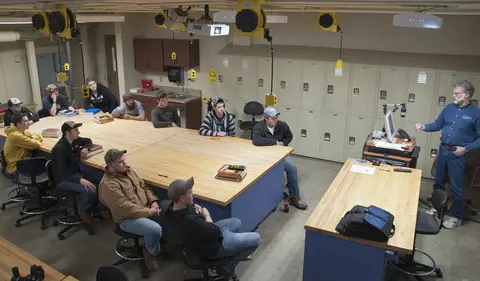Work & Learn With An Apprenticeship
Partner with an employer to complete an apprenticeship. You'll agree to work for an employer who offers paid on-the-job training and complete required education. Apprenticeships often take several years to complete and are based on hours earned on the job and in the classroom. Choose from apprenticeships in plumbing or carpentry, or continue your education with the Technical Studies - Journey Worker associate's degree.
Become An Apprentice
“Looking back on it, that was one of the best moves I’ve ever made. It opened the door to so much and gave me the chance to have a good-paying career.”
See What An Apprenticeship Is All About

What is an Apprenticeship?
-
A combination of on-the-job training and related classroom instruction.
-
A partnership between an employer who offers on-the-job training, the apprentice who agrees to work for the employer, the technical college or training group, and the State of Wisconsin, Department of Workforce Development, Bureau of Apprenticeship and Standards.
- The apprentice works with a journey worker (skilled craftsman) for a specified number of years.
- Each apprentice is required to take designated related instruction throughout their apprenticeship usually provided through the technical college. Typically, apprentices attend day school for eight hours every other week (72-hours per semester) and receive a normal hourly salary while attending class during the day.
- Apprenticeship training also requires additional courses, usually offered on evenings or weekends.
Your Prior Experience Matters
Before you start a program, learn how your past experience can save you time and money. You may have previous education and work experience that could qualify for Credit for Prior Learning.